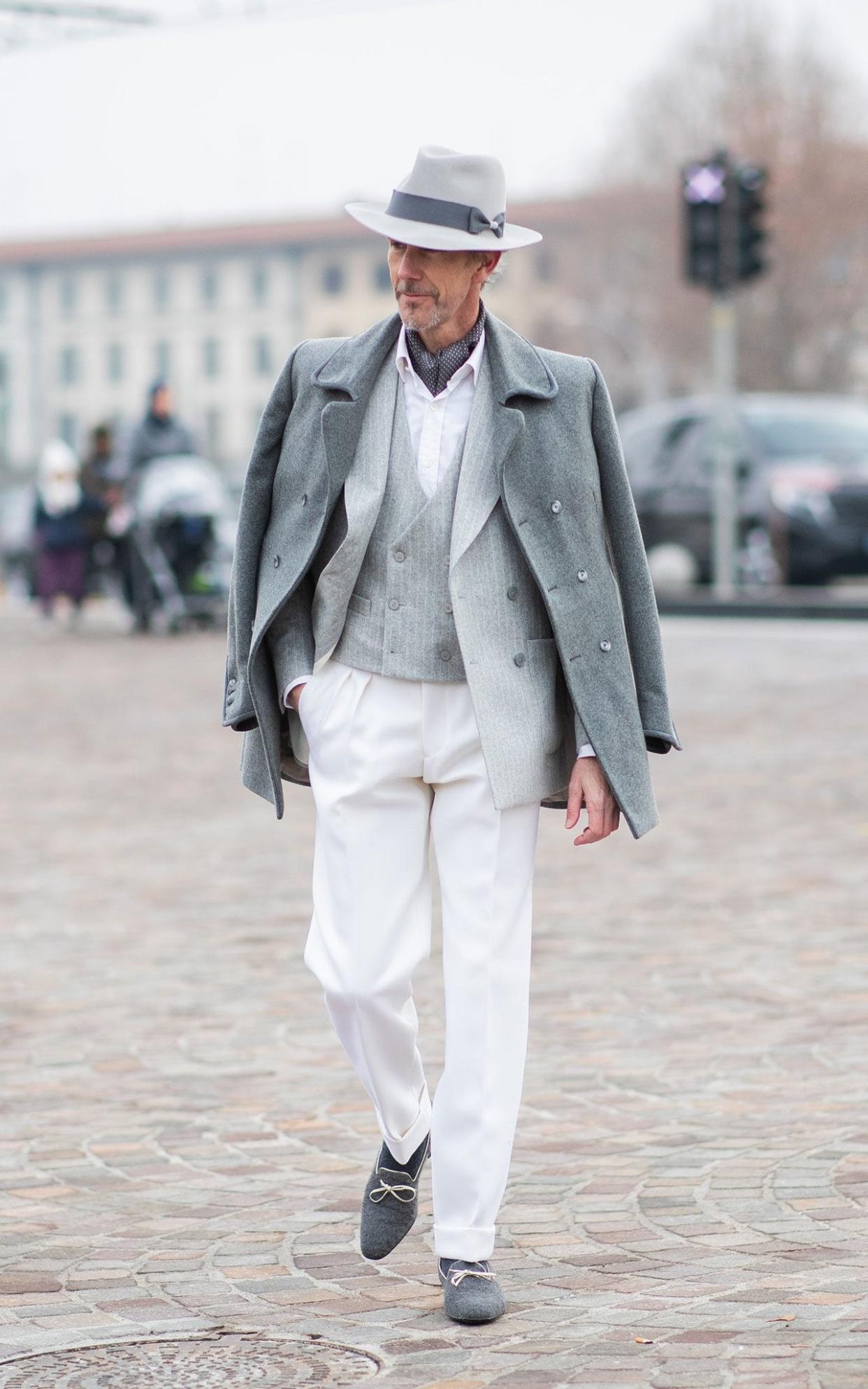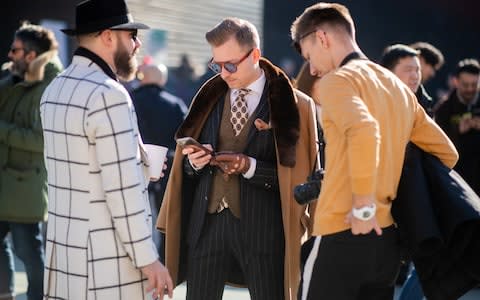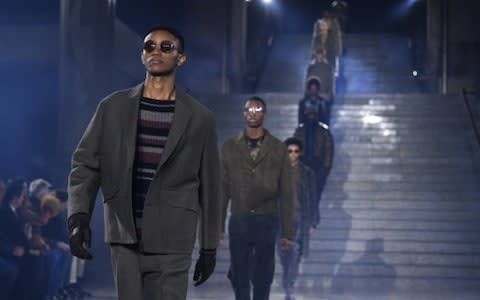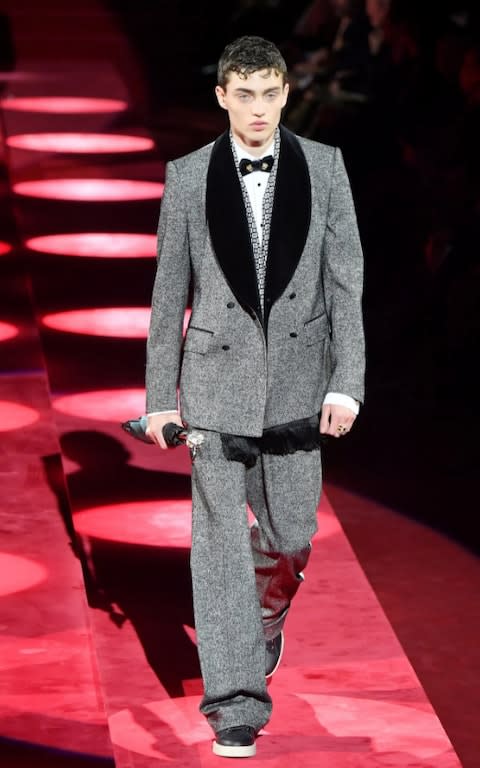Lessons from Pitti Uomo: The ABCs of Italian style

Pitti Uomo, the bi-annual Florentine men’s fashion trade fair, is – alongside the showcasing of clothing brands from across the world – a fascinating study in the kind of pack behaviour, primal posturing and mating dances one would normally see in a David Attenborough documentary.
For it’s here that the curious phenomenon of the “Pitti Peacocks” exists; a rare breed who arrive in perfect formation, dressed up to the sartorial nines in matching suits, fantastical coats and all manner of adornment in the hope of capturing the lens of the street style photographers. Utterly silly, but a lot of fun to watch.
At this January’s fair, on a crisp, bright morning, a pack took to their own personal Serengeti, the Piazza del Crocifisso, watched on by a group of highly amused, seventy-something Italian men, and it was the latter that looked the infinitely more stylish of the two species.

Sipping espressos, in pristine fedoras, handsome coats, leather gloves chicly tucked into their breast pockets, they were a Fellini vignette in effect, a masterclass in that most hard-to-define-area, the art of Italian style.
British men could do well to take a tip or two from our Italian brothers, who historically haven’t been embarrassed by really caring about their clothes. There’s a very particular Italian greeting between men in Italy – “bello uomo”, which means “hey, good looking”; no chat-up, just an appreciation of how a man presents himself and the care he’s taken to dress well.
“Italian men’s style is about eleganza, it’s sophistication,” say Dolce & Gabbana at Milan Fashion Week Men’s, which follows on from Pitti Uomo. The pair conjure up the Sicilian tailoring heritage of Domenico Dolce (his father was a tailor), with a series of weighty wool suits in classic, masculine cuts.

“It’s about being refined but not obvious about it. It's a modern way of dressing as it’s quite soft,” says Ermenegildo Zegna’s creative director Alessandro Sartori of the Italian approach to tailoring. So, what are the rules – unsaid but instinctively understood – that govern the bello uomo wardrobe?
Ease up
It was the tailoring houses of Naples – a hive of suiting activity thanks to its proximity to mills – that created the soft-structure shoulder when Englishmen were in upright, more formal versions.
The rolled shoulder became a calling card of a gentler approach to suits and coats; a more fluid cut and less weight in the jacket (by making it half canvas, which effectively takes out the lining, plus only including a back panel), as seen at Milan from Dolce & Gabbana, Pal Zileri and Emporio Armani. The latter took that sense of at-ease-soldier insouciance a step further by showcasing slouching suits in tufted textures.

If you’re going to dress up, do it seriously
The flip side of this, is the propensity to really go for it in the proper sartorial stakes; and if you’re upping the ante you might as well do it to the nines.
This means structured, upright tailored suits; there’s nothing like the sight of an elderly Venetian man in pinstriped suit, camel coat slung over the shoulders, Borsalino tilted just so, tie pin and brogue immaculate, to make you long to master the dark art of sprezzatura.
This means layering up; a shirt with a jacket and a coat that’s airy enough to accommodate without crushing the fabric. Shoulder robing is an innately Italian move; us Brits might find it a tad effete, so by all means use it as God intended if you wish.
Embrace accessories
While the full flamboyance of the Pitti Peacocks isn’t something the average man might necessarily want to emulate, Italian men in general tend to give prudent attention to accessories (and how to wear them) – not to act as showmen but to add finesse.
Hats are a mainstay, for example: handsome felt trilby hats and fedoras worn with ease, instead of emulating a costume-y boater at Henley. Likewise, neck adornment doesn’t necessarily have to mean the standard tie – I’ve watched Milanese gentlemen undo their ties at the end of a working day and turn them into pocket squares.
In Italy, it’s just as normal to don a cravat under a shirt as to wear the more standardised alternative.

Marry form with function
There’s a reason that technical outerwear is a particularly Italian preoccupation; their fabric innovation is second to none, as seen at Tod’s and Moncler. And with that comes a twist on how to dress in winter.
The sweater, for example, is often swapped with a quilted, padded gilet, worn in a less après ski way by incorporating it into classic, everyday wardrobes. Brunello Cucinelli’s suggestion is to wear it over a shirt and tie, and under a wool blazer; dynamic but not casually sports-centric.
Think about your after-dark attire
Aside from the glitzy suits, Dolce & Gabbana also created soft, robed jackets and breezy trousers that look deliciously louche.
The other tribe of Italian eveningwear is slightly more va-va-voom – lean suits and what is increasingly known as the “athletic” fit T-shirt, one designed to show off those muscles for the bello uomo who knows exactly what he’s doing.
Sign up for the Telegraph Luxury newsletter for your weekly dose of exquisite taste and expert opinion.

